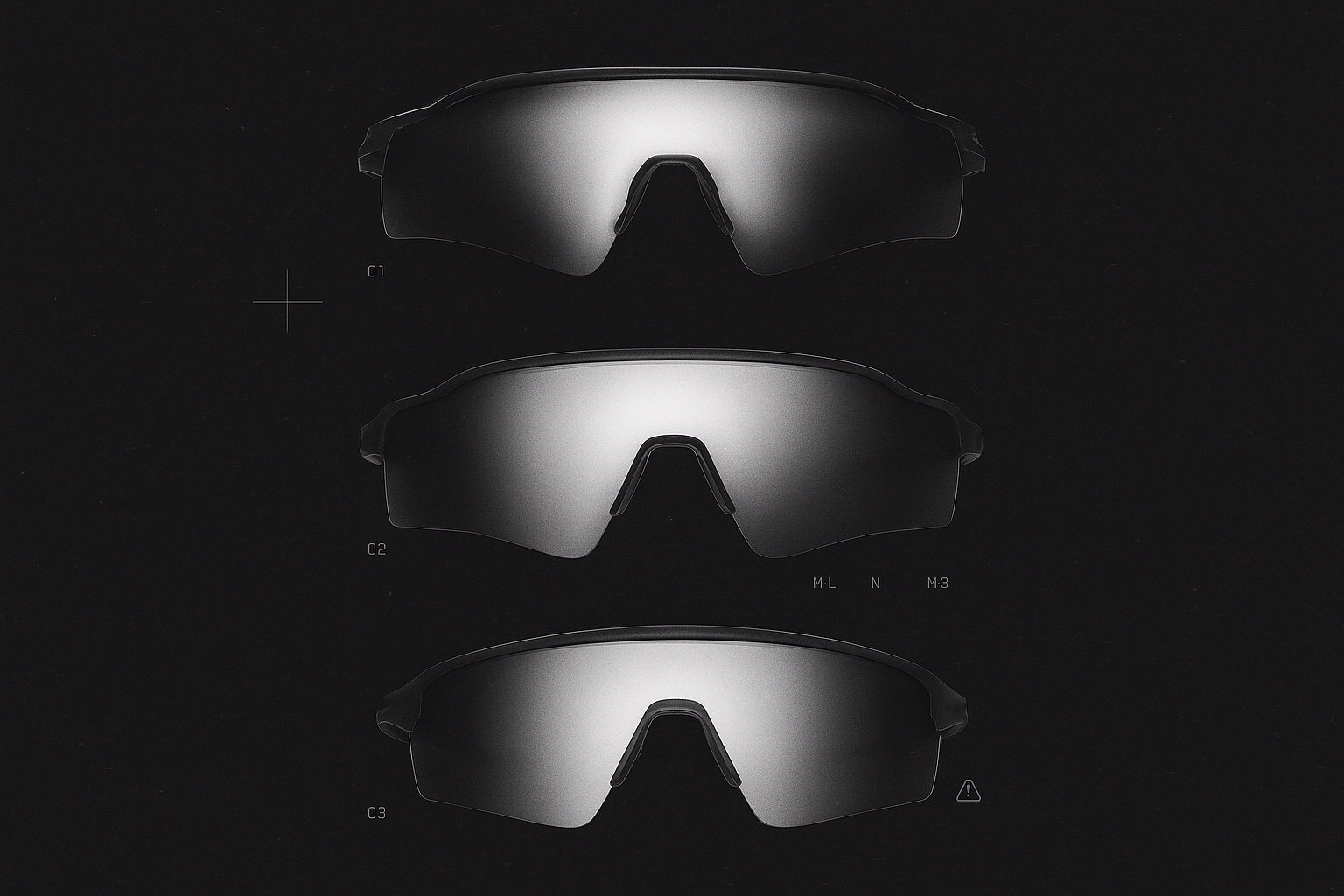CASE
MORE
The Power of Brand Positioning: How To Stand Out in A Crowded Market
In a crowded market overflowing with lifestyle brands, standing out can feel like an uphill battle. Why do some brands become cultural icons while others fade into background noise? The answer often lies in brand positioning – the art of staking out a unique spot in your customer’s mind. It’s the not-so-secret weapon that transforms businesses from commodities into unforgettable brands. In this inspirational guide, we’ll explore what brand positioning really means, why it matters for your mid-sized B2C brand, how it works, and how you can harness its power. Along the way, we’ll draw on wisdom from legendary brand builders and examples from iconic lifestyle brands (Patagonia, Yeti, Red Bull, Supreme, Nike, Glossier, and more) to show how smart positioning drives clarity, consistency, differentiation, loyalty, and recognition. Let’s dive in.
What Brand Positioning Is
Brand positioning is more than a marketing buzzword – it’s the core identity your brand owns in the hearts and minds of your target audience. Marty Neumeier, a renowned branding expert, defines a brand’s position as “the unique space a brand occupies in the mind of its target audience”. In simple terms, it’s the idea or promise people associate with your brand whenever they hear your name or see your logo. For example, when you think of Nike, you might immediately think “Just Do It” – a feeling of athletic empowerment. Think of Red Bull, and you envision adrenaline, extreme sports, and the slogan “gives you wings.” These impressions are no accident; they are the result of deliberate positioning.
At its heart, positioning is about perception. It’s not about what you say you are – it’s about what customers believe you are, relative to other options. Al Ries and Jack Trout, who pioneered the concept in their book Positioning: The Battle for Your Mind, explain that positioning isn’t something you do to a product, but rather something that happens in the mind of the customer. In other words, your brand’s position lives in your audience’s perception. It’s the mental “space” you own versus your competitors. Are you the sustainable outdoor brand? The premium quality cooler? The edgy streetwear label? The goal is to define that unique space clearly and consistently.
Importantly, brand positioning is not just a tagline or a pretty logo (though those can help signal it). It encompasses your brand’s purpose, values, personality, and the promise you deliver to consumers. It’s the answer to questions like: “What does our brand stand for?”, “Who is it for?”, and “Why should people choose us over others?” When you have strong brand positioning, your customers can answer those questions instantly in their own words. They feel “this brand is for people like me, and it offers something others don’t.” That clarity in their minds is incredibly powerful.
Why It Matters
Why invest time in honing your brand position? Because without positioning, your brand will struggle to rise above a sea of similar offerings. In fact, “without positioning, a brand is just a commodity. With positioning, it becomes a story that stands for something.” – Marty Neumeier. In today’s world, almost every market is crowded. Just look at the numbers: in the U.S., the number of small businesses grew from about 25.8 million in 2005 to 33.2 million in 2023 – that’s millions more brands fighting for customers’ attention. If you don’t clarify how you’re different, you risk blending in and being forgotten.
A clear brand position gives you focus and direction. Internally, it aligns your team because everyone knows the core idea and values to uphold. Externally, it tells customers what to expect and remember about you. This clarity has tangible benefits. It leads to consistency across all your touchpoints – from your website and social media to your product design and customer service – which in turn builds recognition and trust. (After all, humans trust what they recognize and understand.) Think of Nike’s consistency: the swoosh, the “Just Do It” mantra, the empowering tone. They have used the same core positioning for decades, establishing a familiar comfort that makes people trust that Nike will deliver on its promise of quality and inspiration.
Crucially, strong positioning is the antidote to commoditization. If your brand doesn’t stand for something unique, you’ll be forced to compete on price and superficial features. That’s a race to the bottom that squeezes profits and dulls brand identity. On the other hand, a well-positioned brand can command loyalty and even price premiums. Customers will pay more for a brand that resonates with them and represents a story or quality they value. According to Neumeier, a brilliant positioning can make people choose your product even if it costs more than the competition. We see this in the real world: YETI, for example, turned a mundane product (the cooler) into a badge of identity. By positioning itself as the high-performance, outdoor lifestyle brand, Yeti has evolved from a niche gear maker into a full-on lifestyle brand with a cult-like following – fans who eagerly spend $300 or more on a cooler because it represents durability and outdoor spirit. That kind of loyalty and willingness to pay comes only when your brand meaning rises above the product itself.
In short, brand positioning matters because it gives your audience a reason to remember you, to prefer you, and to stick with you. It’s how you differentiate in a meaningful way. It’s how you ensure your brand isn’t just another face in the crowd, but a name that evokes a specific, positive feeling. For ambitious founders and CMOs, getting your positioning right will bring much-needed clarity, consistency, and elevation to all your branding efforts.
How It Works
So, how do you actually position a brand in practice? Brand positioning works through a combination of strategic insight and consistent execution. It’s part science (understanding markets and psychology) and part art (creatively defining your brand’s identity). Here’s how it works, step by step:
- Stake a Claim in the Mind: The battle for customers is fought in the mind. Consumers today are bombarded with choices and information, and they only have so much “mental real estate” for brands. Effective positioning means deciding what specific idea or benefit you want to own in their mind, and focusing on that relentlessly. Legendary marketers Ries and Trout advise brands to “own a word in the mind” of consumers – in other words, be the first or most definitive brand that people think of for a certain concept. For example, Volvo long ago claimed “safety” in the car market. In the lifestyle space, you might aim to own words like “sustainability” (Patagonia), “energy” (Red Bull), or “community-driven beauty” (Glossier). Choose a simple, compelling idea that you want your brand to be synonymous with.
- Differentiate with Meaning: To position well, you must highlight what makes you different – and better – from the crowd. Ries and Trout famously put it bluntly: “Differentiate or die.” Effective positioning shines a spotlight on the unique value or advantage your brand offers. Maybe your product quality is superior, or your style is radically distinct, or your company’s mission is one-of-a-kind. Whatever it is, being unique is essential. This doesn’t mean differentiation for its own sake; it should be relevant to your audience’s needs. Ask yourself: What do we offer or do that nobody else does quite like us? Perhaps you focus on a neglected niche, or you flip the script on how things are traditionally done (as Dollar Shave Club did with subscription razors, for example). Find that special sauce and make it central to your story.
- Focus on Your Target Customer: Brand positioning only works if it connects with what your customers actually care about. That means deeply understanding your target audience – their desires, problems, values, and lifestyle. As Ries and Trout emphasize, positioning must address the customer’s needs, desires, and concerns. For instance, Glossier knew young beauty consumers craved a more authentic, two-way relationship with brands, so they positioned themselves as the beauty brand that listens to and empowers its community. The key is to clarify who you are for and what they get from you. Are you for elite athletes or weekend warriors? For hardcore skaters or fashion-conscious teens? When your positioning aligns with your ideal customers’ self-image and needs, it will click in their minds and feel meant for them.
- Keep It Simple and Consistent: The best brand positions are simple, memorable, and consistent. You want to distill your brand’s value proposition into something easy to grasp. In positioning, simplicity matters – if you try to stand for too many things at once, you end up standing for nothing specific. Nail one big idea and stick to it. Then, repeat, repeat, repeat. Consistency builds position over time. Every time a customer encounters your brand – whether it’s an Instagram post, a product unboxing, or an in-store experience – they should get the same core message and vibe. This doesn’t mean being boring; it means being cohesive. Nike is a master of this: from the imagery to the inspirational tone to the swoosh logo, they consistently reinforce the idea that Nike stands for pushing your personal limits. Consistency is how you carve out a permanent niche in the customer’s mind. Over time, consistent positioning leads to strong brand recognition – people instantly know what you’re about, which amplifies your impact.
In essence, brand positioning works by focusing your brand around a singular concept and value, embedding that concept in the customer’s mind through every interaction. It’s a long-term game: you win mental real estate not overnight, but by steadily building associations and trust. When done right, the result is a brand that customers not only notice, but prefer because they feel it’s uniquely suited to them.
Wisdom from the World’s Greatest Brand Builders
Great brand builders throughout history have preached the importance of sharp positioning. Let’s take inspiration from a few legends and their frameworks:
- Al Ries & Jack Trout – The Battle for the Mind: Ries and Trout are the pioneers who popularized positioning as a concept. Their core insight: Positioning is a battle won in the customer’s mind, not on store shelves. They taught that a brand must claim a distinctive idea in the mind and be the first or most prominent to do so. They urged marketers to narrow their focus and own a word or concept (for example, FedEx owns “overnight delivery”). Importantly, they warned brands to avoid confusion at all costs – focus and simplicity are key. As their work summarized, being different and being first with a strong idea gives you a competitive edge in a crowded marketplace. The phrase “differentiate or die” comes straight from Jack Trout; it’s a blunt reminder that without uniqueness, a brand won’t survive. Their wisdom reminds us to be bold and singular in defining our brand’s meaning.
- Marty Neumeier – The Brand Gap & Zag: Marty Neumeier is another branding guru known for emphasizing radical differentiation. He famously said “When everybody zigs, zag.” His approach is about finding your brand’s “onlyness” – that one thing that only your brand can claim. As we saw earlier, Neumeier also highlights that without a clear position, you’re just another commodity, but with one, you become a brand with a purpose and story. One of his powerful insights: “A brand is not what you say it is, it’s what they say it is.” In other words, your positioning has to live in the customer’s mind (echoing Ries & Trout), and it must be compelling enough that customers define your brand in the way you intend. In his book Zag, Neumeier even provides an “onliness” exercise: fill in the blanks – “Our brand is the only ___ that ___.” If you can complete that sentence, you have a sharp positioning. For example, you might say, “Our brand is the only eco-friendly outdoor apparel company that buys back and recycles its own products” (a nod to Patagonia’s unique stance). This framework forces you to articulate a differentiation that no one else can claim. Neumeier’s work is a call to be brave and stand out by being truly unique.
- Byron Sharp – How Brands Grow: Byron Sharp is a marketing scientist whose research sometimes challenges traditional branding dogma. He found that many market leaders aren’t radically different in terms of product features – often, they win by being distinctive and memorable (think of logos, slogans, consistent colors) and by reaching as many people as possible. Sharp emphasizes building mental availability – basically, making your brand easy to notice and recall. In his words, “Building mental availability requires distinctiveness and clear branding, while brands seldom compete on meaningful differentiation.”. This is a fascinating perspective: Sharp suggests that being distinct (having unmistakable brand assets and a ubiquitous presence) can matter more than having some technically unique feature. What does that mean for positioning? It underscores that your brand should develop signature identifiers (visuals, voice, experiences) that set it apart, and ensure your positioning is crystal clear. Even if your core product is similar to others, you win by owning the mindshare. For example, Coca-Cola isn’t drastically different from other colas in taste, but its brand position (happiness, friendship, shared moments) plus its distinctive assets (red color, cursive logo, iconic bottle) make it dominate its category. Sharp’s research-backed wisdom reminds us that clarity and consistency in branding (distinctive cues, ubiquitous messaging) are powerful tools to fortify your position.
- Other Expert Insights: Many other brand thinkers echo similar themes. Simon Sinek, for instance, advocates starting with “why.” His famous line – “People don’t buy what you do; they buy why you do it.” – is a reminder that a strong purpose can be at the core of your brand positioning, inspiring customers on an emotional level. Legendary ad man David Ogilvy believed in brand image and personality – every brand should have a defining personality in consumers’ minds. And authors of Blue Ocean Strategy (Chan Kim & Renée Mauborgne) suggest that instead of fighting competitors head-on, sometimes the smartest positioning creates an entirely new market space (a “blue ocean”) where you’re unique. The common thread in all this wisdom: know who you are, be different, and be consistent. The world’s greatest brand builders all stress that investing in clear positioning is not a luxury – it’s mission-critical for building an enduring brand.
Hidden Secrets and Hacks to Stand Out
Beyond the well-known principles, what are some lesser-known secrets and clever hacks to sharpen your positioning and truly stand out? Here are a few strategies – drawn from both expert frameworks and real brand successes – that can give your brand an edge in a crowded field:
- Lead with Purpose (and Mean It): One “secret” to instant differentiation is to stand for something bigger than your product – a purpose or cause that resonates deeply with your audience. When your brand has a mission, it becomes more meaningful and memorable. A shining example is Patagonia. This outdoor apparel brand built its position around environmental stewardship and sustainability. Patagonia famously ran an ad saying “Don’t Buy This Jacket” on Black Friday, urging consumers to buy less and recycle – a bold anti-consumption message that perfectly aligned with their values. The result? It strengthened Patagonia’s identity as the eco-conscious brand and actually boosted sales by 30% the next year, because customers respected the authenticity. The hack here is authenticity: if you commit to a cause (be it sustainability, social justice, community well-being, etc.), make sure you walk the talk as Patagonia does. When done right, purpose-driven positioning creates emotional loyalty – people feel proud to support you. As Simon Sinek noted, people are drawn to “why you do it”. So ask: What does your brand believe in? How can you weave that purpose into your story in a genuine way? If your brand conviction is strong and genuine, it will set you apart and inspire a tribe of loyal fans.
- Create Scarcity & Hype: Another unconventional tactic to heighten your brand’s desirability is strategic scarcity – intentionally limiting supply or access to your products to fuel demand. This approach has been mastered by streetwear brands like Supreme. Supreme transformed from a small skate shop into a global cult brand by leveraging “drop culture”: they release very limited quantities of new items in periodic drops. This calculated scarcity creates frenzy – lines around the block, items selling out in minutes – and has made Supreme synonymous with exclusivity and hype. The brand’s positioning is the ultimate cool-kid label that you can barely get. As one analysis put it, Supreme has “transcended simple clothing, becoming a cultural phenomenon synonymous with exclusivity, hype, and calculated scarcity.” This scarcity hack works especially for lifestyle and fashion brands where status is a factor – owning the brand makes the customer feel part of an exclusive club. If overdone, it can backfire (too much exclusivity can frustrate fans), but when balanced well, it can significantly boost your brand’s cachet. Even if your brand isn’t going to implement limited drops, the broader lesson is to be a little scarce or selective: don’t dilute your brand by being everywhere for everyone. Hype can be built by earning a reputation that your brand is special and not easy to obtain or imitate.
- Sell a Lifestyle, Not Just a Product: The most magnetic brands position themselves as experiences or lifestyles rather than just goods. This is a powerful hack – it elevates your brand into something larger and more emotionally compelling. Look at Red Bull. Ostensibly, Red Bull sells an energy drink, a flavored caffeinated beverage. But you’d hardly know it from their marketing – they’ve positioned Red Bull as the ambassador of extreme sports, adventure, and high-octane living. Through sponsoring daredevil stunts, rallies, skate and snowboarding events, and creating content about pushing human limits, Red Bull “transformed itself into a lifestyle brand, not merely a drink on the shelf.” They’ve attached the brand to a feeling – the thrill of adrenaline and adventure – so strongly that consuming Red Bull is like joining that extreme lifestyle. The drink is almost incidental; it’s the gateway to “giving you wings” and excitement. This lifestyle positioning builds huge brand equity: customers don’t just buy the product, they buy into an identity. Similarly, YETI doesn’t just sell coolers; it sells the rugged outdoor lifestyle. Yeti produces films, hosts a podcast, and tells stories of adventure, effectively creating a community of outdoor enthusiasts. They’ve built a content-rich ecosystem where customers feel part of a tribe. The hack here: think about the lifestyle or culture surrounding your product. Can you create content, community events, or partnerships that embed your brand into that culture? By doing so, you position your brand as the leader of a lifestyle, which is far more differentiated than any product spec. You’re not just a shoe, you’re the skateboarding lifestyle (like Vans). You’re not just a camera, you’re the creative explorer’s toolkit (like GoPro). When your brand becomes synonymous with a lifestyle, competitors selling mere products can’t touch you.
- Turn Customers into a Community (and Advocates): A hidden gem in branding is the power of community-building. If you position your brand as a community where customers belong and have a voice, you create an army of advocates and a brand that feels alive. Glossier provides a textbook example of this hack. Glossier started as a beauty blog (“Into The Gloss”) and grew into a billion-dollar beauty brand by co-creating products with its followers and celebrating real customers. Glossier’s positioning was “beauty by real people, for real people” – a friendly, inclusive alternative to traditional cosmetics giants. How did they stand out? They actively encouraged customers to share their routines and feedback, and they featured that user-generated content in their social media and marketing. This approach made customers feel heard and valued, effectively turning them into brand ambassadors. Glossier built a vibrant community where fans felt they belonged and even had a stake in the brand’s development. The loyalty this created is immense – customers weren’t just buying face wash; they were joining a movement. The takeaway: engage your audience and make them part of your brand story. Whether through social media groups, forums, events, or featuring customer stories, find ways to bring your customers together. A brand community not only boosts retention and word-of-mouth (because people love to talk about what they’re part of), it also differentiates you as the brand that genuinely cares and connects. It provides an emotional glue that competitors can’t easily replicate.
- Be Consistently Distinctive: Finally, here’s a “hack” endorsed by science: make your brand distinctive in every way possible – visually, verbally, experientially – and do it consistently. In a market overflowing with similar choices, sometimes standing out is as straightforward as looking and sounding different. Think of Supreme’s bold red box logo – instantly recognizable – or Tiffany & Co.’s robin’s-egg blue color, or Target’s red bulls-eye. These brands have ownable assets that catch the eye and stick in the mind. From your logo, colors, and packaging to your brand voice and store design, identify signature elements and use them religiously. Over time, this consistency creates familiarity and trust. As noted earlier, Nike’s unwavering commitment to its core brand elements has made it a global icon; “Consistency in its branding establishes Nike as a familiar comfort that regularly makes good on its promise”. Being distinctive also means having a point of view – don’t be afraid if your brand’s style or voice isn’t for everyone. Maybe you’re the only brand in your niche with a playful, irreverent tone (that could make you memorable). Or perhaps your packaging is minimalist while all competitors look flashy. These choices set you apart. The key is, once you choose your distinctive assets and style, apply them everywhere. This hack works because it builds mental availability – customers see something and immediately link it to you. In a practical sense, it might mean creating a brand style guide and never deviating from it. Over time, your distinct identity becomes an asset that amplifies your positioning, making your brand easy to spot and hard to forget.
Each of these “hacks” complements the core of brand positioning. They help you amplify your uniqueness and ensure your brand sticks out in the best way. You don’t have to use all of them, but even one or two can supercharge your efforts to stand out in a noisy market.
How to Find and Shape Your Unique Brand Position
By now, you might feel both inspired and a bit overwhelmed by the possibilities. How do you actually go about defining your brand’s unique position and bringing it to life? Let’s break it down into practical steps. These steps blend strategic thinking with creative reflection – an approach that’s grounded yet encouraging, perfect for entrepreneurial founders and marketers looking for clarity and direction:
1. Start with Soul-Searching (Purpose and Values): Begin by looking inward. Why did you start this business, and what change do you want to make in your customer’s life or the world? Clarify your purpose and core values. This is the foundation of your positioning. A strong purpose can be a north star that guides all decisions. For example, if your purpose is to “make outdoor adventure accessible to everyone,” that sets a tone for how you position your brand (friendly, inclusive, educational, etc.). Jot down what your brand believes in and stands for. This will ensure your eventual positioning is authentic and meaningful to you (which makes it meaningful to others, too).
2. Know Your Audience Deeply: Next, define who you’re trying to reach. Get specific about your target customers – not just demographics, but their mindset, lifestyle, and aspirations. What do they care about? What problems or desires do they have in your category? What other brands do they love and why? The goal is to find the intersection between what your audience wants and what you can uniquely offer. If you understand your customers’ most pressing needs or wishes, you can position your brand as the answer. For instance, the founders of YETI realized that serious outdoor enthusiasts were frustrated with cheap coolers that broke – so they positioned Yeti as the rugged, “built-for-the-wild” solution for that specific group. Create buyer personas, gather feedback, and empathize with your customers’ lives. The deeper your insight into your audience, the sharper and more relevant your positioning will be.
3. Survey the Competitive Landscape: Now, look outward to the market. Make a map of your competition – both direct and indirect. How are each of those brands positioned? What do they claim (“largest selection,” “lowest price,” “highest fashion,” etc.) and what do they signal to customers (look at their branding and messaging)? Identifying competitor positions helps you find a gap or an angle that isn’t taken. A useful exercise is to list competitors and write down the one or two words each one owns in the customer’s mind. Then ask: Where is there an opening for us? Perhaps no one in your space is owning “community-driven” or “sustainable” or “high-end artisan”, etc. Also, note if the market is saturated with similar claims – that’s a sign you truly need to zag where others zig. As Marty Neumeier advises, if you find you’re not one of the top two brands in a category, consider creating a new category or sub-category you can lead. For example, if you’re a beverage brand in a market dominated by two big soda companies, could you redefine your category as “functional wellness drinks” and be the pioneer there? Don’t be afraid to reframe the game. The insight here: you win at positioning by being the only choice of your kind, not just another choice. Which leads to the next step…
4. Define Your “Onlyness”: This is the crux – articulating what makes you unique. A powerful way to do this is to use the “only” statement framework from Marty Neumeier: “Our brand is the only ______ that ______.”. Try to fill in that first blank with your category (the space you play in), and the second blank with your unique claim or difference. It forces you to pinpoint your singular value. For example: “We are the only skateboard brand that collaborates directly with street artists for every design.” Or “We are the only outdoor gear company that repairs your equipment for free, for life.” If you struggle to fill in the blanks, keep refining – it means your differentiation isn’t sharp enough yet. Be bold here; it’s okay if it initially sounds a little grandiose or if it narrows your focus. Remember, a smaller niche well-owned is better than a broad market where you’re lost. Your “onlyness” statement won’t necessarily be public-facing, but it will inform all your branding. It becomes your internal mantra for what you do better or differently than anyone. When you’ve nailed this, you should feel a surge of confidence and clarity – you’ll know exactly what flag you’re planting in the market.
5. Craft a Positioning Statement (Clear and Concise): With your unique angle defined, formalize it into a succinct positioning statement. This is typically a one or two-sentence summary of your brand’s who, what, and why. One classic formula is: “For [target audience], [Brand] is the [frame of reference/category] that [benefit/differentiator] because [reason/support].” For example: “For urban cyclists, OurCo is the bike apparel brand that fuses high performance with street fashion, because we believe riders shouldn’t have to choose between style and function.” The exact wording is for your eyes (and your team) primarily – it guides your strategy. Make sure it passes the test of clarity: no jargon, no vague fluff. Anyone who reads it should immediately grasp what you do and what makes you special. Also, test it against your earlier research: Does it resonate with your customer’s needs? Does it distinctly separate you from competitors? Refine until it’s both true and compelling. This statement will underpin your messaging across the board, so you want it strong and clear enough to serve as a compass.
6. Align Every Touchpoint with Your Position: Now it’s time to bring the positioning to life. Consistency is key: audit every touchpoint of your brand and ask whether it reinforces the position. Your visual identity (logo, colors, typography) should match the personality you aim to own. Your tone of voice in content and ads should reflect your brand’s character (be it rugged, luxurious, playful, etc.). Design your product or service experience to deliver on the promise. For instance, if your position is about exceptional customer service, make sure your unboxing, support, and follow-ups wow the customer at every turn. If your brand stands for “premium quality”, ensure that even the smallest details (like packaging or website UX) feel premium. Create brand guidelines that stem from your positioning statement, so that everyone in your company or creative team knows how to communicate the brand. Over time, this rigorous alignment builds a coherent brand image in the market. It’s this clarity and consistency that drive recognition and trust – customers start to see the pattern in how you show up, and that pattern is your position solidifying in their minds.
7. Stay the Course, but Evolve with Insight: Finally, remember that brand positioning is a long game. Once you set your course, give it time to bear fruit. Resist the urge to change your positioning frequently – that will confuse your audience and weaken the associations you’re trying to build. The founders of Yeti didn’t abandon their premium positioning the moment a cheaper competitor appeared; they doubled down on quality and storytelling. However, staying the course doesn’t mean being stagnant. Continuously gather feedback and watch the market. Measure things like brand awareness and customer perception (surveys, social listening). Are people describing your brand the way you intend? If not, identify whether your messaging isn’t clear or if perhaps a tweak is needed in your strategy. You can evolve how you express the position or extend it to new products, but keep the central idea steady. Think of it like a tree: the trunk (your core position) remains, while the branches (tactics, campaigns, product lines) can grow in new directions as long as they’re rooted firmly. With patience and consistency, your unique brand position will yield increasing returns, building equity that makes your brand stronger each year.
As a closing insight, remember that brand positioning is as much an art of commitment as it is a strategy. It requires committing to an identity, a story, a set of values – and then projecting those boldly into the world. It might feel risky to narrow your focus or to take a stand on a big idea, but that’s exactly what makes brands memorable and beloved. Every iconic lifestyle brand you admire, from Patagonia’s eco-warrior spirit to Nike’s relentless inspiration, started by staking out a clear, confident position and staying true to it. By finding and shaping your unique brand position, you give your business the foundation to not just compete, but to lead – to stand out in that crowded market with a brand that people know, love, and elevate above the rest. That’s the power of brand positioning. Embrace it, and your brand’s future will be as bold and bright as the vision that started it all.


Ready to build your brand?









.avif)